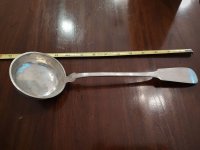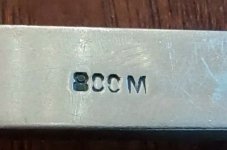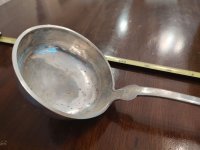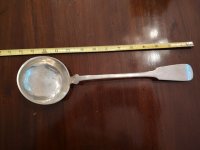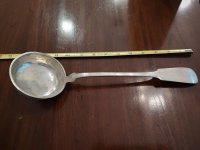Mr. Digger
Hero Member
- Nov 25, 2014
- 606
- 1,449
- 🥇 Banner finds
- 1
- Detector(s) used
- Minelab Equinox 800, SE pro
- Primary Interest:
- Metal Detecting
I've inherited a large quantity of sterling and coin silver pieces from my parents, and this large ladle is the only one with this marking on it. Does that say 800M? I know 800 means 80% silver, but there are no other identifying marks or silversmith hallmarks on it. Is this definitely silver? Best guess on age? Thanks for looking!


